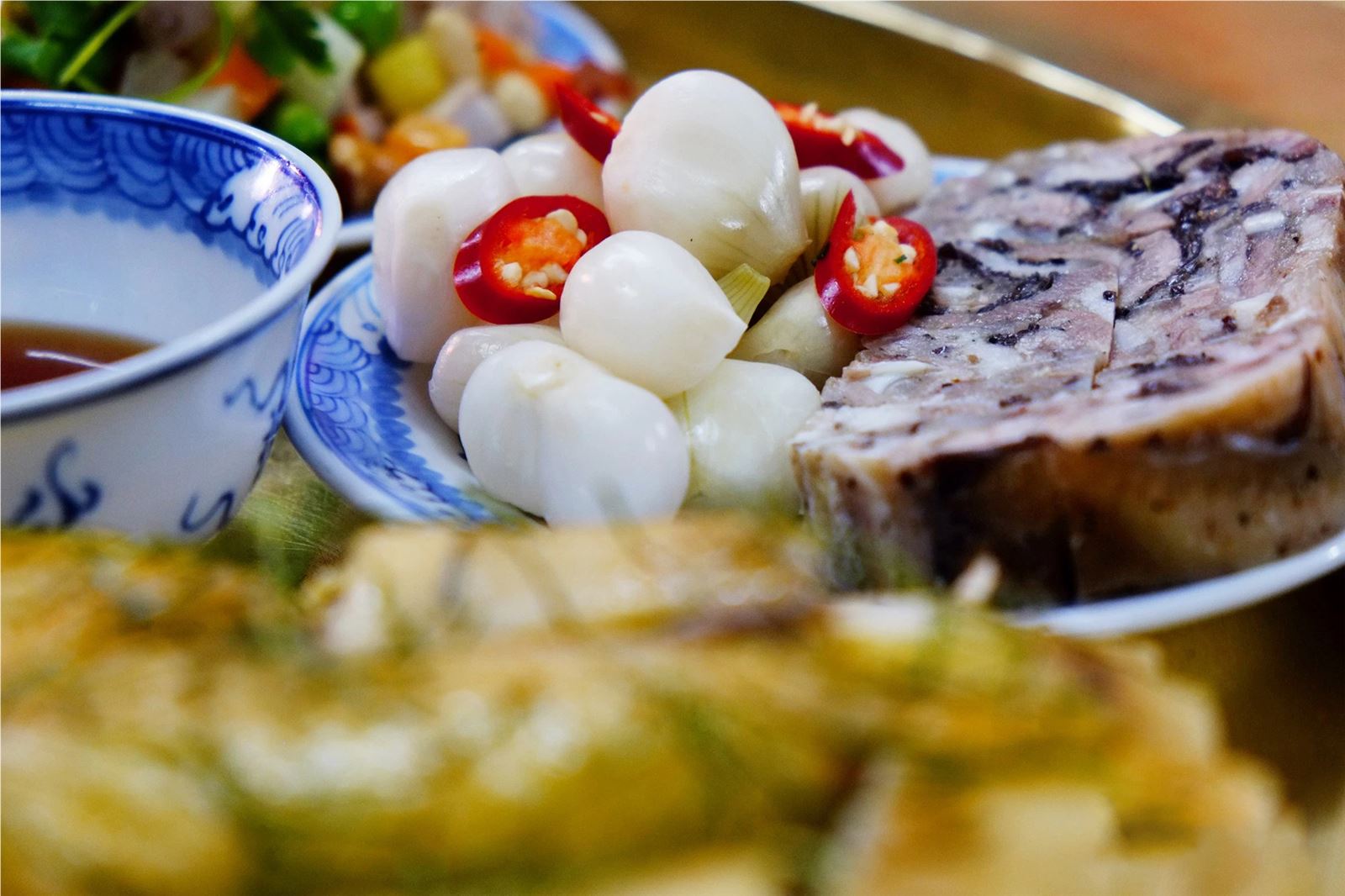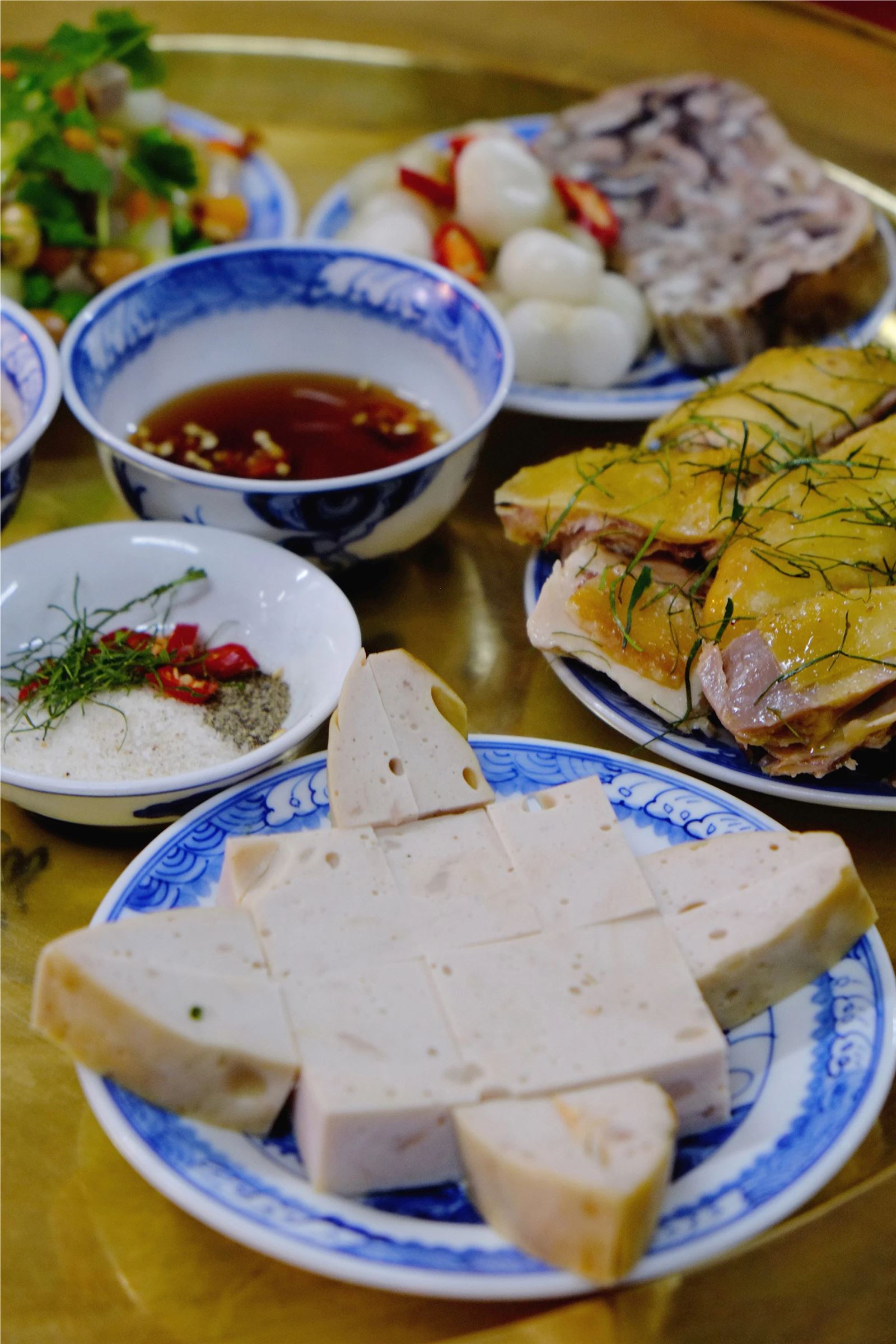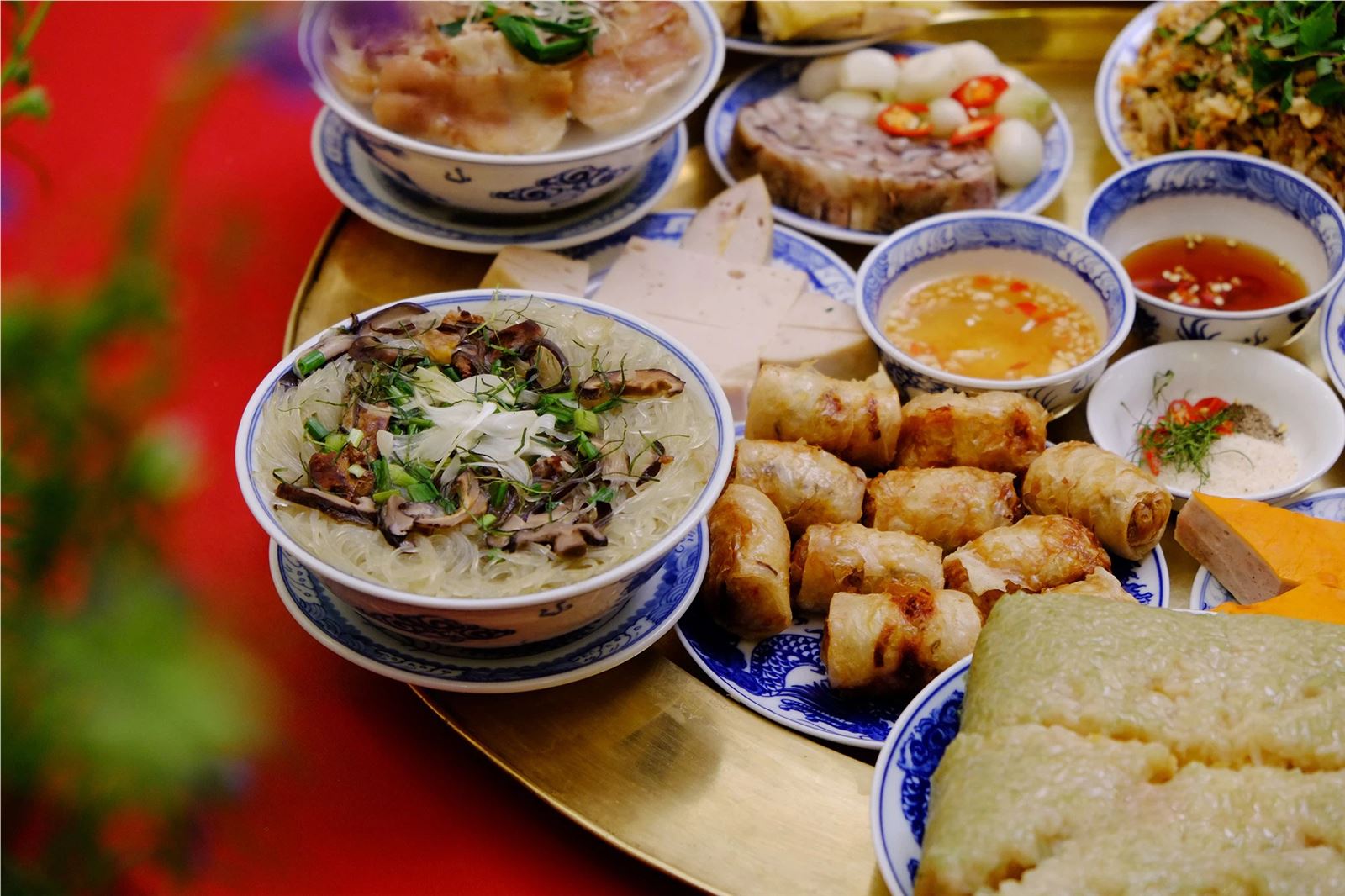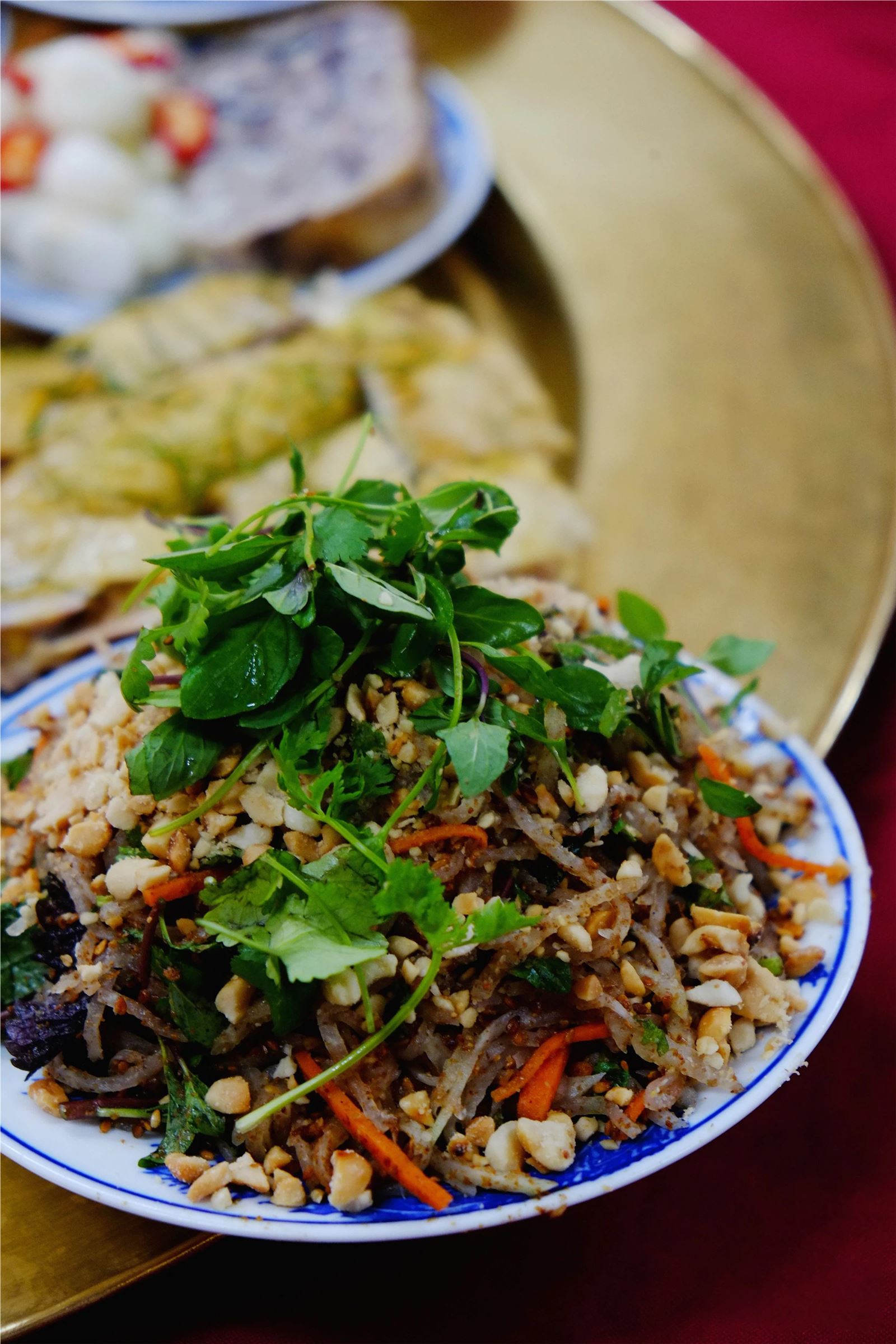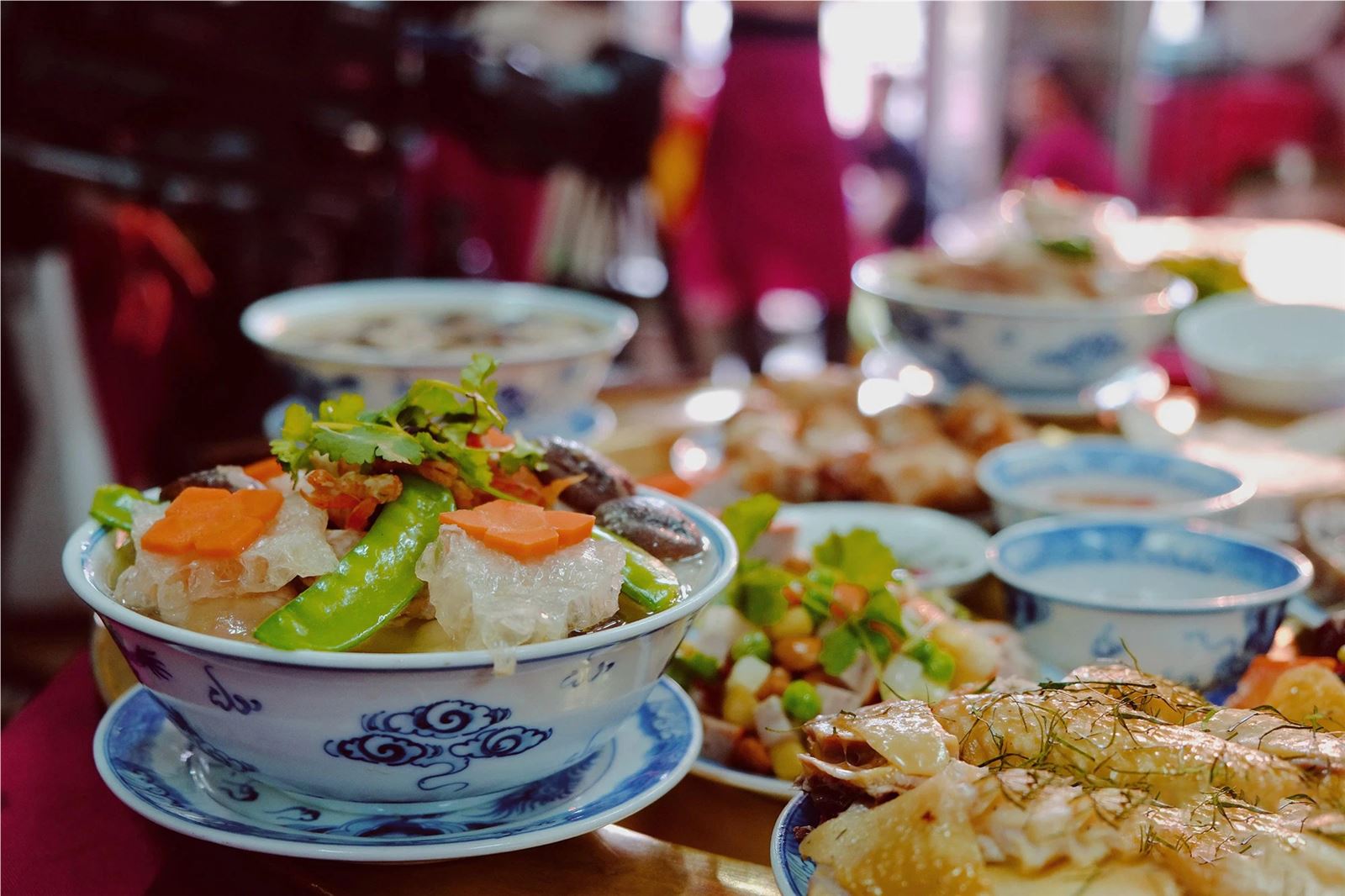For Hanoi people, Tet trays always require sophistication and sophistication in each dish, showing the culinary quintessence of the rich flavor of the land of Hanoi.
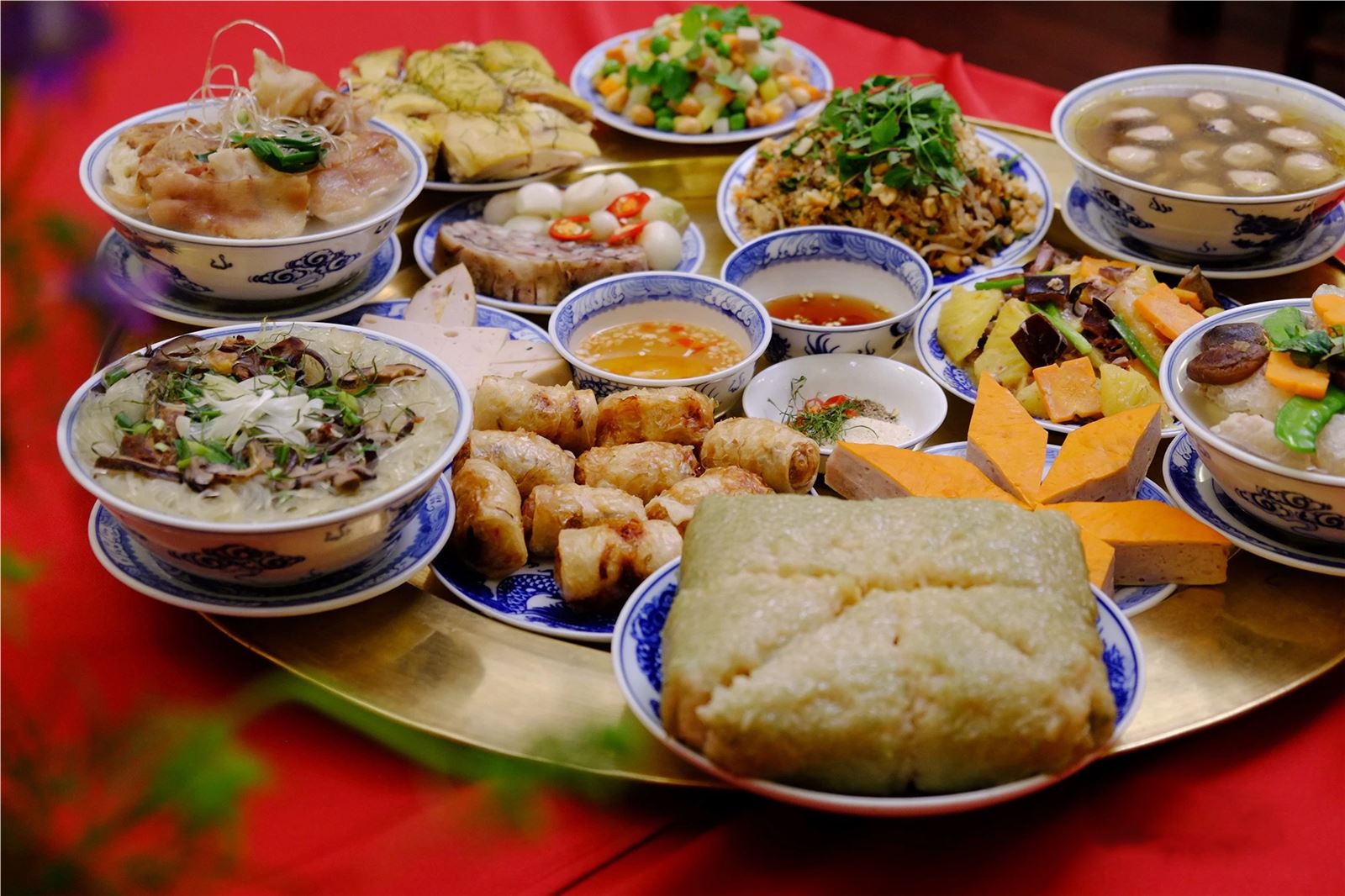
Traditionally, the Tet tray must have four pillars, 4 bowls, and 4 plates symbolizing the four seasons and four directions. A well-off house can make a larger tray with 6 bowls and 6 plates or 8 bowls and 8 plates.
Each house is different, but there are dishes that have become indispensable features on Tet Day. Hanoi people in particular and Northern people in general often prepare Tet with banh chung, boiled chicken, frozen pork, silk rolls, cinnamon rolls, fried spring rolls, ball soup, stir-fried plates, sticky rice, pickled onions, etc ... Each dish will be neatly laid out in small bowls and plates, with the typical blue enamel motif of Bat Trang.
The offering chicken must be a flower rooster. When boiling chicken, boiling water must be boiled, so that the old hot water fills the chicken secretions to help the broth not become fishy and cloudy. To boil the chicken pot again, you have to lower the heat and simmer it, both boiling and skimming the foam. The chicken broth is fragrant and clear to cook a bowl of sweet and cool soup. After boiling, the chicken must retain the golden skin. If the chicken is left whole, the chicken must tie fairy wings, hold a crimson velvet rose in its mouth, if it is cut into pieces, it must be evenly distributed, placed on a very plump plate and sprinkled on top of a few sliced lemon leaves. In particular, accompanied by a plate of boiled chicken, it is indispensable to have a plate of lemon salt and pepper, which is really full of typical flavor for this dish.
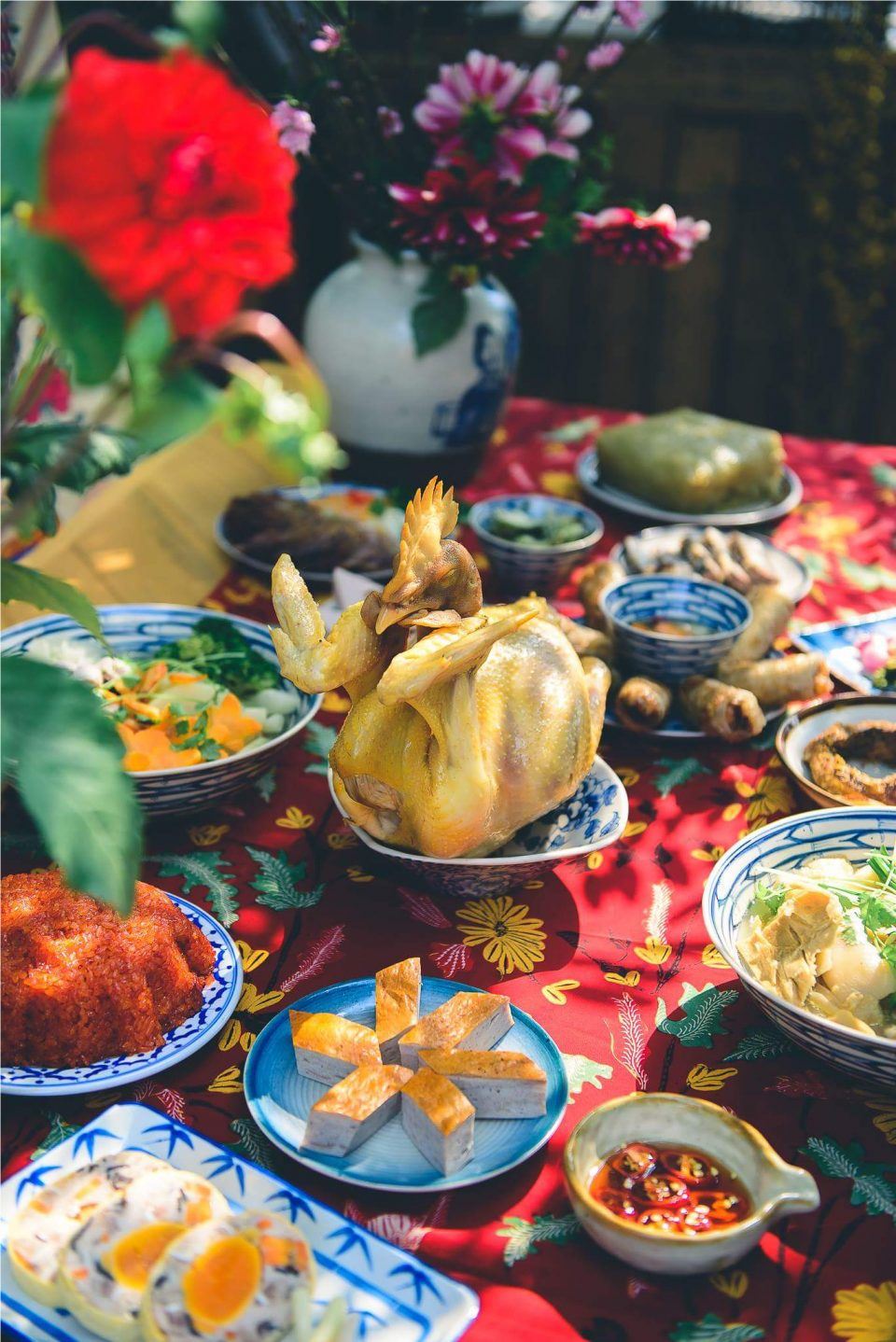
When wrapping banh chung, the meat is not arranged vertically, but serrated and then rolled into a circle. That way, when cutting the cake into 8 pieces, each piece has enough skin, fat, and lean parts. Banh chung after boiling will be offered to the ancestors first.
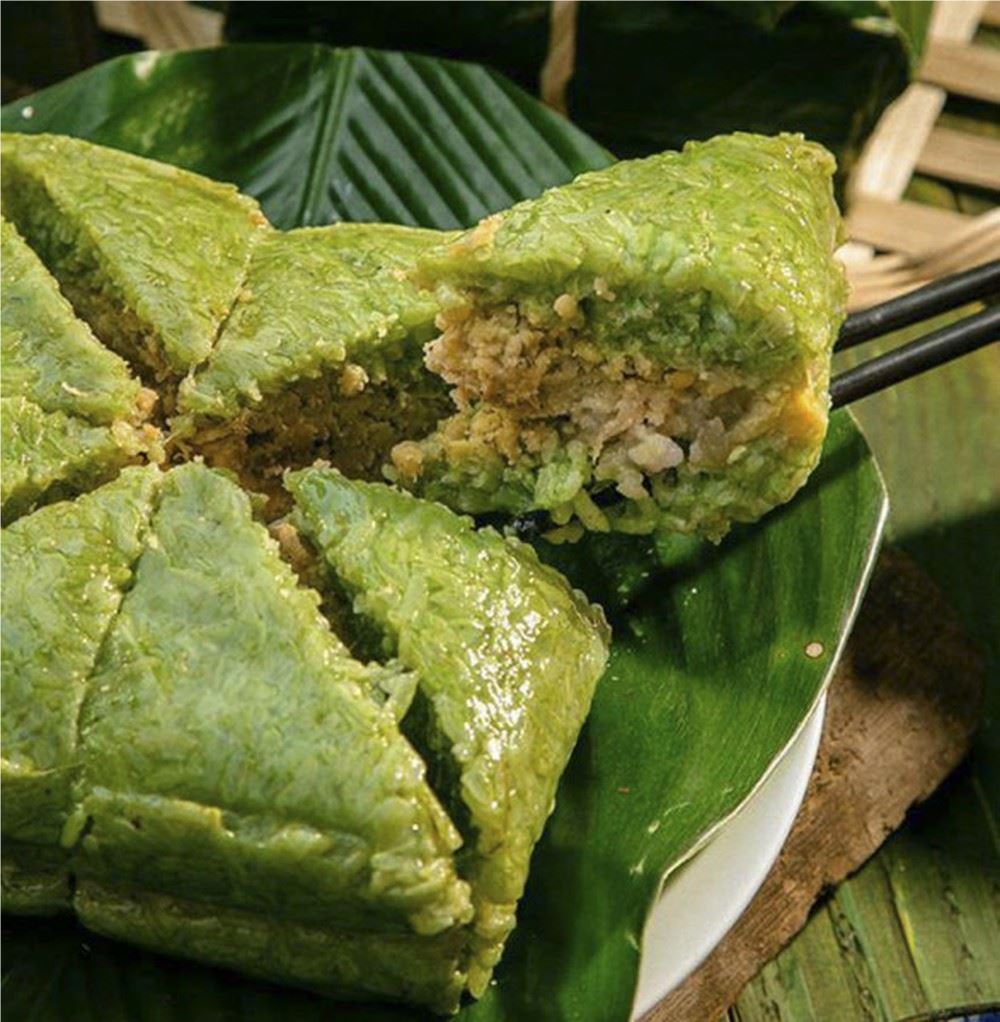
Vegetables on Tet at that time mainly consisted of kohlrabi, carrots, and beans, but the mothers processed them very skillfully. The kohlrabi carrot is divided into different parts, the square place is trimmed or sliced to make a dummy, the excess distortion is peeled to make a clean leg for a bowl or diced to make a stir-fried almond.
The more elaborate the rice tray is offered, the more accurate it must be when lowered to use. If there are guests at home, the first is to invite guests to eat a piece of ball, followed by a piece of mushroom, a piece of tenderloin, then a plate of frozen meat, a plate of silk spring rolls, and a plate of stir-fry,... The plump dishes that fit in beautiful small dishes are continued like this until the end in the order from mild to bold. Thanks to that, guests are both delicious and feel the host's thoughtfulness and thoughtfulness.
Over time, the traditional Tet tray of Hanoi people has changed a lot, partly because modern Hanoi people update many dishes with new cooking methods, partly due to the different conditions and taste preferences of each person. However, the way Vietnamese people make Tet trays still has one thing in common, which is the sincerity to express respect for ancestors and the love of family members placed in the reunion tray.
According to Channel 14
